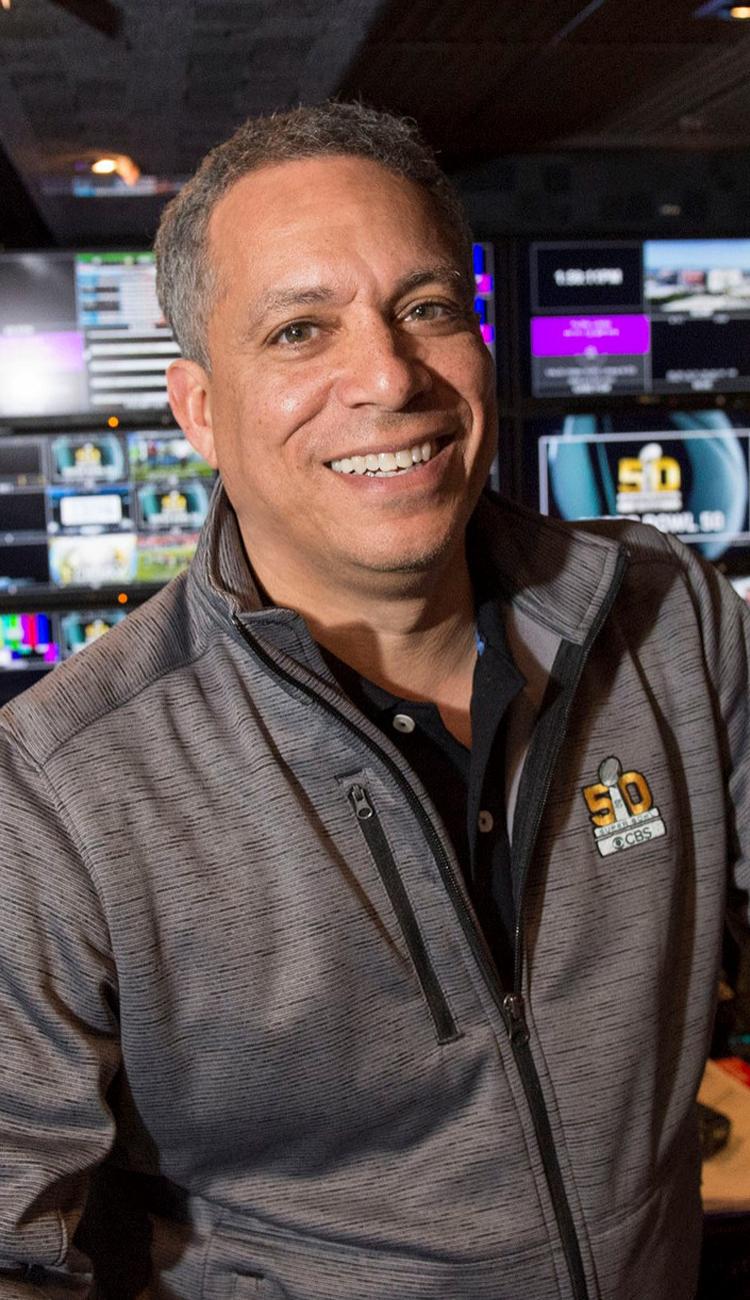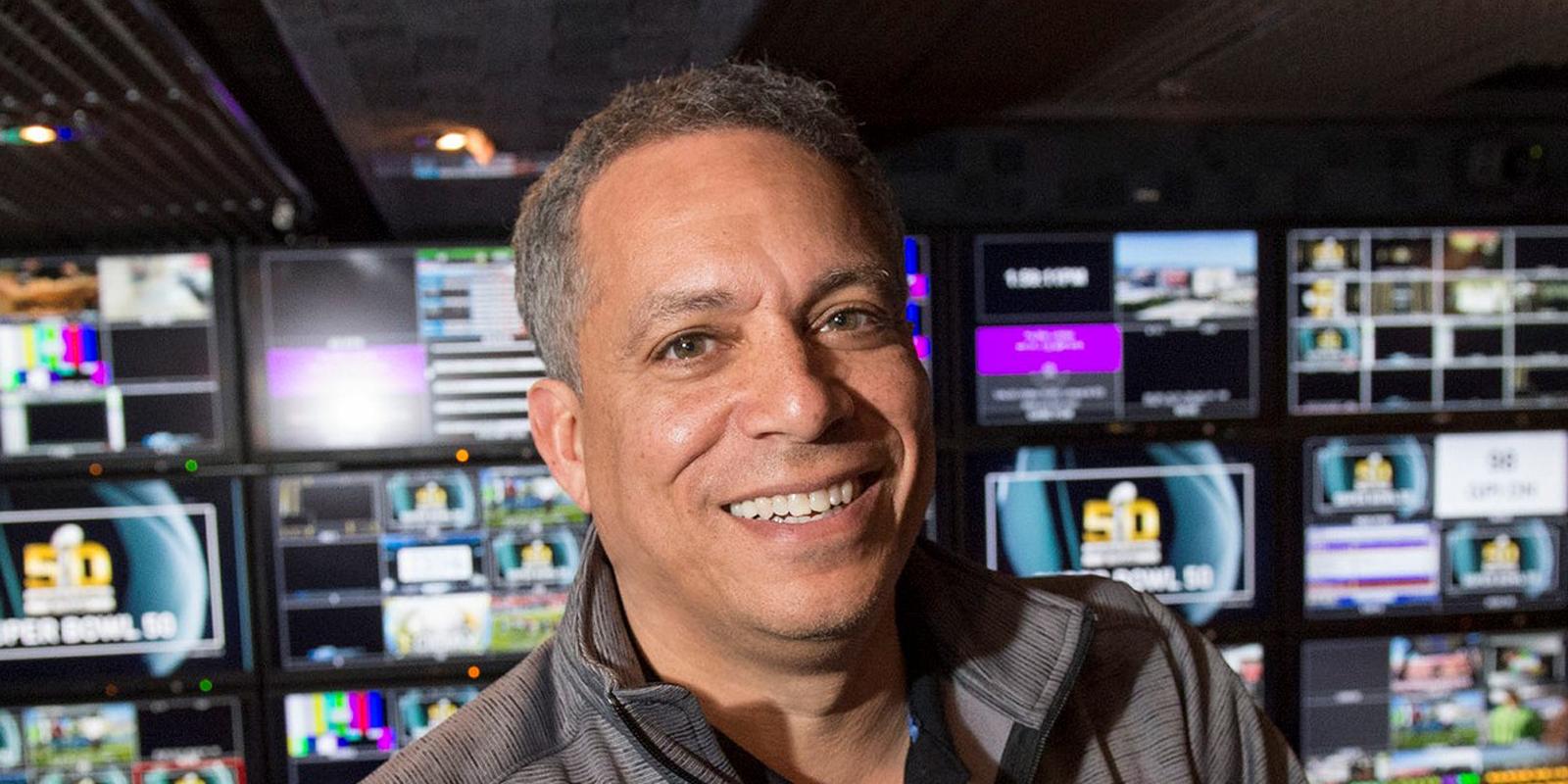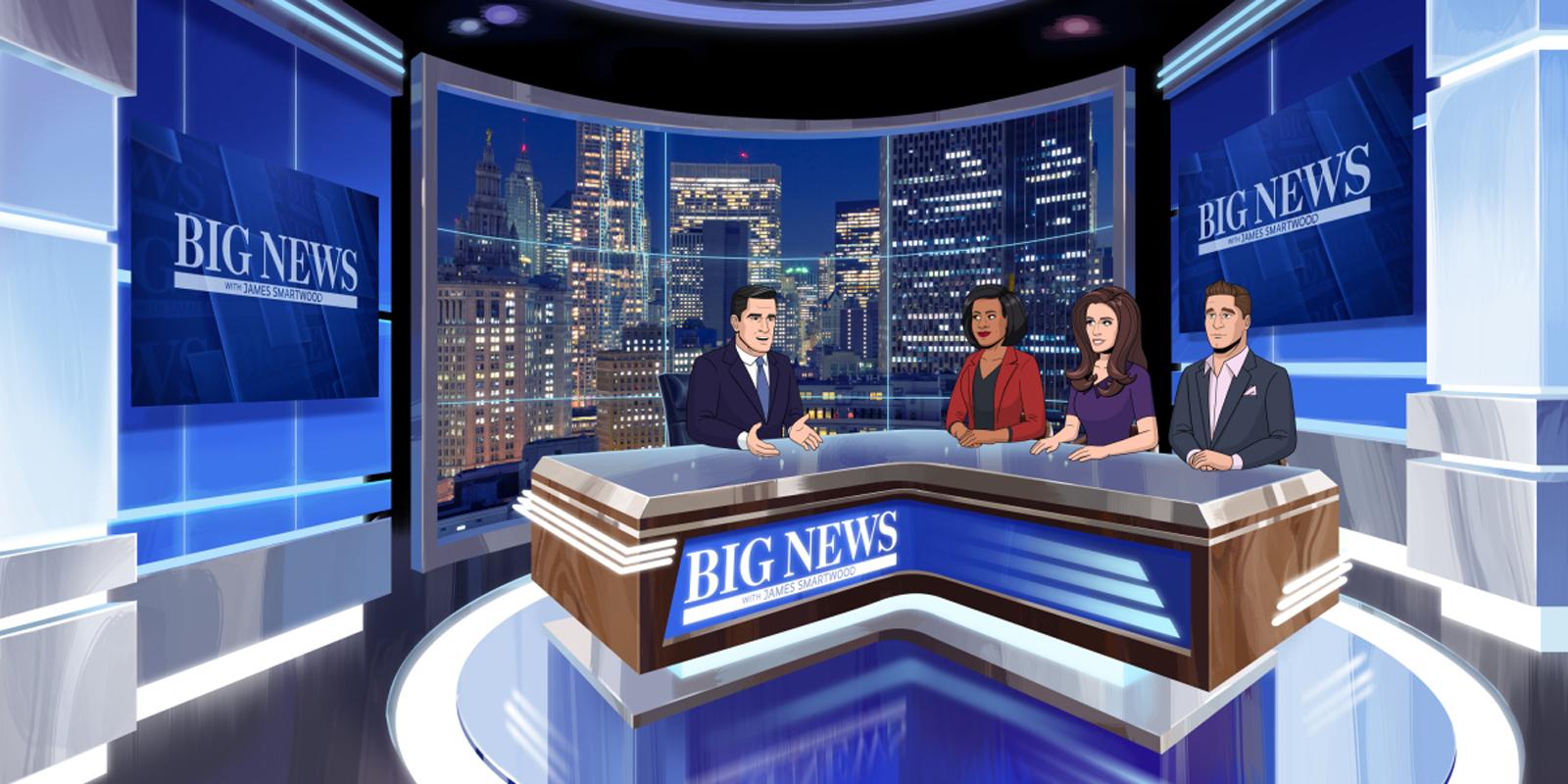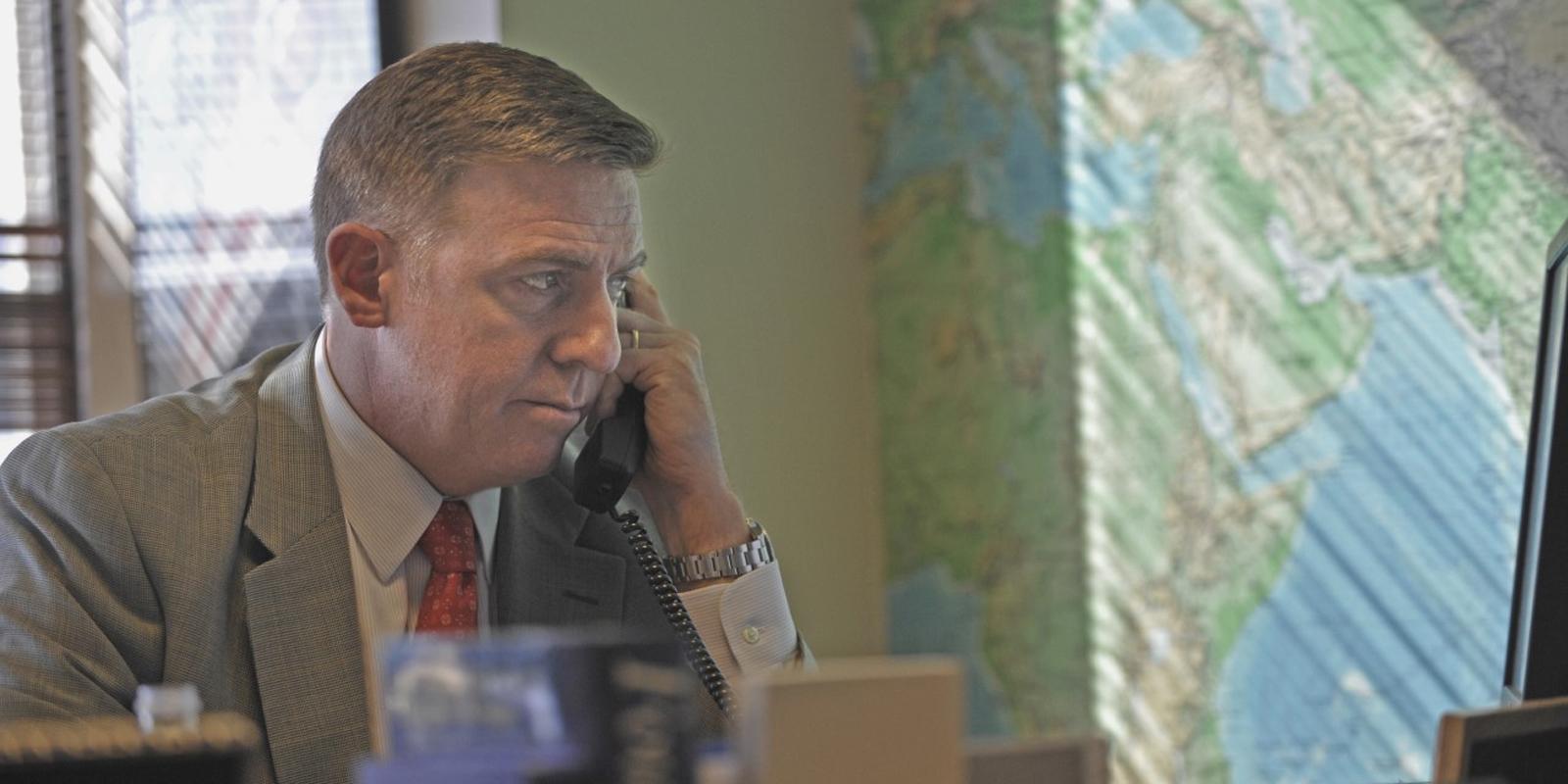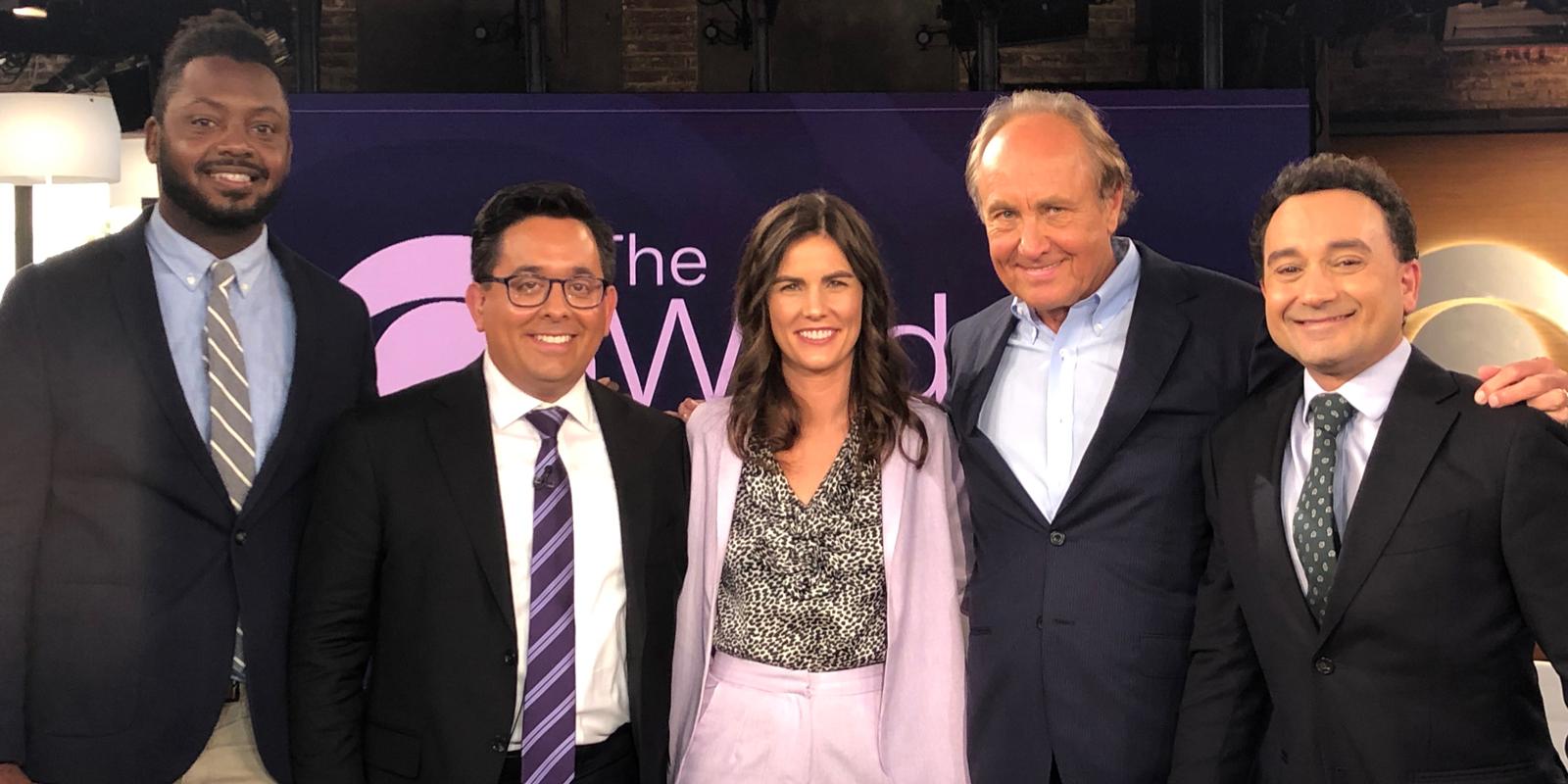Aug 20, 2020
"We’re taking the technology to another level."
Eye On is a Q&A series that spotlights CBS television executives and creatives.
For the 102nd PGA Championship from TPC Harding Park in San Francisco, CBS Sports partnered with ESPN to show wire-to-wire coverage, from the first tee shot to the last putt. CBS’ broadcast aired in primetime on Saturday, Aug. 8, and Sunday, Aug. 9.
For eight weeks, the division had been readying itself for the first major event of the rescheduled 2020 season. Like the PGA TOUR tournaments before it, and many other live sports airing now, the PGA Championship adhered to strict health and safety guidelines, reducing the on-site footprint. But still, the broadcast requires an exceptionally extensive team, with a multitude of cameras and staff working at sites all over the world. Overseeing the overall production is Harold Bryant, SVP of production and executive producer for CBS Sports.
ViacomCBS spoke with Bryant before the tournament about the scale of this major broadcast and his role in the middle of it all.
What's the difference between producing a major tournament versus other tournaments?
It’s an enormous setup with a tremendous amount of cameras that dwarf any of our other traditional productions, whether it's football, a PGA TOUR golf event, college football or basketball. We roll out our top-of-the-line technology. When the players are teeing off, we have tracers on hand-held cameras that are roving throughout the course to catch those shots from the fairway. Or when they fly into the green, we get the reverse shots as they come in. We have drones that we will use live, to not only show the beauty of the course, but also some of the coverage of shots. We worked with a company out of San Francisco that has a system with an additional 90-camera array. So, on top of our regular coverage cameras on the 14th tee box, they have 90 small cameras set up in a 180-degree arc. We can capture players teeing off and really break down their swing, frame by frame. The Fly Cam is a 700-foot camera that will cover the entire practice area and the range. It’s pretty incredible.
Another difference is the amount of hours that we're on the air. For this major, every single shot will be available on air. We're on from the players’ first shot at 7:00 a.m. PT until the last putt that falls, probably around 6:00 p.m. PT on Sunday. It's a long weekend.
What is the relationship with ESPN like? What are the challenges of coordinating a broadcast of this size?
We work together hand in hand on this. We discuss camera locations, technology, announcers and who's going to be working the event. We don't look at it as, "This is ours and theirs." We say, "What's going to work best for the viewer? What's going to make the viewer happy and engaged and satisfied?" That's how you have to do it in this day and age.
There are so many pieces, so many spokes to the wheel. We have to make sure we're all communicating. Producing the entire broadcast falls on our group—our group is in the chair, in the trucks, producing, directing and providing technical support. Everything comes through CBS. The challenge is just making sure everything is communicated properly to all the parties involved.
After major sports have been away for so long, how does it feel having this first major golf tournament back on the air?
It’s a little bit of nervousness, but it's a good nervousness. We want to be on our toes and make sure everything's buttoned up. But it's very exciting. We want to go out there and be able to show everybody that coverage can still happen at these major sports. And we can do it in a safe fashion.
We came up with an exceptional plan that's kept everybody safe for the eight weeks that we've done these PGA TOUR events. So, as long as we can continue that, not only will coverage be a success, but keeping people safe will be a success as well.
How much of the team is doing their work remotely?
Specific to this event, we have reduced our footprint on site, looked at reducing the number of people that we bring to these events, spreading people out and making sure there's plenty of space in the trucks. All of our editors for our tracing technology, for example, are working remotely. We have people sitting in their homes doing replays. We have video shaders and guys that manipulate the cameras, that are sitting at a remote facility.
We're also producing our late night show on CBS Sports Network called PGA Championship Clubhouse Report from a setup in Stamford, Conn. The producer, the director and some of the technicians are all on site in Stamford, and the announcers are in San Francisco.
You also have our team in New Zealand. They do our virtual reality elements, some of the side panels that come up and show the course, how the ball travels, and tracking where players have hit the ball from or how far they’ve hit it all week long. Again, we’re taking the technology to another level.
